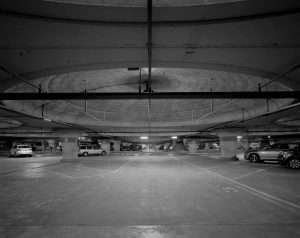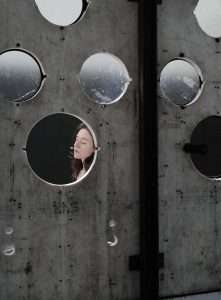FRANCESCO FONASSI
Prescriptions betrayed by sick hours, anarchy through the tables of the law: a conversation with the winner of the Talent Prize.
by Francesco Angelucci
There are maybe two or three projects in the work of Francesco Fonassi, different from each other in their aims and chronology, but bound together in the same covers: Guarigione, Ultradiana and Salvatici, the latter being the winner of the 2020 Talent Prize. The works, although close to previous projects in their alteration of auditory material, stand out thematically in their proposal of a cure: prescriptions for sick hours. Infecting the sonorous timbres, infiltrating the rhythms of musical development, traces of ancient pharmacological practices can be perceived: medicaments. The absolute freedom of composition expressed through the severity and threat of its sudden, violent, necessary, original cut off evokes poetic discourse: when it expresses anarchy through the tables of the law, when a sonnet becomes venom in the poet Patrizia Valduga’s Medicaments and more Medicaments.  So, there is a sickness; maybe there is a cure: “I think – says Fonassi – that these works, first and foremost, cure a psycho-physical state of unease and mistrust towards the present. There is nothing more violent than the way the audio material immediately embraces its end. These works prescribe and undergo conditions of epidermic and mental listening, which, based on the context of the place where they are produced or restored, incorporates an idea of recovery. An idea that is mine, certainly, but always referring to the need for cohesion and attraction offered by collective listening, at least as potential. In their own way, as previous projects with a different nature, they are prototypes. I like to imagine these flagless places where one can hypothesise otherworldly thoughts, where one can prescribe a auditory experience that is lucid, and, if you like, antisocial.” And Salvatici does this by defining a tragic and reassuring atmosphere, like a waiting room in a hospital. An acoustic field, composed initially of a Congolese healing chant and an accordion, resonates through two wooden columns borrowed from a processional carriage for Santa Maria In Trastevere. “The columns for the processional carriage, which I faithfully reproduced – continues Fonassi – serve to transmit and display, to transport something sacred, to the extent that we believe in it, or to the extent that we submit ourselves to a pseudo-mystical regime to believe in. In their own way, they are judges. Why a Congolese chant or an accordion? My answer would be: because they breathe, but they cannot breathe on their own. They are formed, then, by groups of people, by breaths, by processions, in fact. This is always before and after my work. I saw someone, during the show in Belluno, touching these columns like someone who touches an injured dog on the street, resting their hand on its chest. Tragic and reassuring at the same time.”
So, there is a sickness; maybe there is a cure: “I think – says Fonassi – that these works, first and foremost, cure a psycho-physical state of unease and mistrust towards the present. There is nothing more violent than the way the audio material immediately embraces its end. These works prescribe and undergo conditions of epidermic and mental listening, which, based on the context of the place where they are produced or restored, incorporates an idea of recovery. An idea that is mine, certainly, but always referring to the need for cohesion and attraction offered by collective listening, at least as potential. In their own way, as previous projects with a different nature, they are prototypes. I like to imagine these flagless places where one can hypothesise otherworldly thoughts, where one can prescribe a auditory experience that is lucid, and, if you like, antisocial.” And Salvatici does this by defining a tragic and reassuring atmosphere, like a waiting room in a hospital. An acoustic field, composed initially of a Congolese healing chant and an accordion, resonates through two wooden columns borrowed from a processional carriage for Santa Maria In Trastevere. “The columns for the processional carriage, which I faithfully reproduced – continues Fonassi – serve to transmit and display, to transport something sacred, to the extent that we believe in it, or to the extent that we submit ourselves to a pseudo-mystical regime to believe in. In their own way, they are judges. Why a Congolese chant or an accordion? My answer would be: because they breathe, but they cannot breathe on their own. They are formed, then, by groups of people, by breaths, by processions, in fact. This is always before and after my work. I saw someone, during the show in Belluno, touching these columns like someone who touches an injured dog on the street, resting their hand on its chest. Tragic and reassuring at the same time.”
Just as a tragedy is consumed only with an audience, Salvatici is complete only through collective listening: after all, many of your works refer to, and are created by a community.
“Almost two years ago, I met Stefano Zaniboni, a musician and passionate collector of shellac discs from the beginning of the 20th century to the 1950s. His trio project, Ear Explorer, focuses on an almost ritualistic reproduction of some of these vinyls, slowed down and manipulated. When I went to his house to borrow some of them to use for the preparation of the track for Salvatici, we ended up listening to volcanic lava and whistling winds, running our mouths off: getting to know each other. I had an incredible sense of calm. The disc containing Demande de guèrison, the Congolese chant, is his: the composition oozes beats and distorsions, which echo on the magnetic tape from one of the two columns that form the installation. Again: when we put our trust in a mediated account, we are no longer the ones that speak.”
This plurality structures some of your other works as well.
“I remember the breathing sessions I did in Sicily with Saori D’Alessandro, voiced along with Luca Garino; the Ospedale station on the Brescia metro for my project Guarigione, where, as well as a year of continuous sound, we welcomed musicians, among whom was Alvin Curran, with his shofar, in dialogue with the new semi-permanent sonic conditions; Ultradiana, where the voices of Letizia Fiorenza and Carlotta Crapes made themselves into dynamic, insomniac architecture, because as we know, the walls have ears – particularly those made from reinforced concrete.” 
This destroys the figure of the artist as a demiurge.
“I maintain that deifying the mystical, or at least masterly figure of the solitary artist is an anacronistic, misplaced way to look at art. We need to weave real, localised networks, organise ourselves and free ourselves from our dependency on our own production.”
An intrinsic chorality, also in musical discourse, emphasised by your frequent use of many voices, sound sources and timbres. At times a dialogue is created, at times there is only silence.
“Silence is the third speaker; what remains is sacred. I often reference one of my favourite ever paintings, the Ritratto del doge Leonardo Loredan by Giovanni Bellini. Through his physiognomic attention to a face that is psychotic, detached, doubtful, Bellini performs an extreme gesture of revelation and wreckage, leaving a precise, inhuman psychology to permeate, which is nevertheless overflowing with faith and charm.”
There is also an expanded plurality in the time folded into the present: you mention Bellini, but also Ginzburg and anonymous French writers from the fourteenth century.
“Last July, when I was invited to take part in a live intervention in the collective show Storia Notturna, at Centrale Fies, inspired by Carlo Ginzburg’s text on the Shabbat, I worked on a text by a 14th century anonymous French writer, connected to the research I did with Daniela Zangrando on the folk figure, Om Selvarech. The text reminded me a lot of Henry David Thoreau, for its mix of subversive and environmentalist conflict: almost a prophecy. For the first time, I used my own voice, processed and unrecognisable, grotesque. I record the text in English and reproduce it in various listening sessions in one of the exhibition spaces, where Giulia Galvan, a professional interpreter, positioned in the space and just visible, repeats my words, live, using the shadowing technique: a preparatory exercise for simultaneous translation. Interrupted by a series of whistles/calls for attention, the sessions of of Work (poema selvatico) – this is the title of the work – speak about how this cognitive and educational technique can relate an unknown formula to the present, as if it is predicting its effects with a slight latency.”
You seem to be running away from something: looking at your works over almost fifteen years, they all seem to turn suddenly, abruptly, to abandon the route in order to define a new perimeter.
“I would like to return to the image with which we opened this conversation. Even considering that I didn’t know what this pharmaceutical atlas was, and nor did I know the work of Valduga, there is something that has always fascinated me in the idea of prescription, or the lack of prescription. Escaping, diverting, making uncontrolled movements: all true.”
SALVATICI
The winner of the 2020 Talent Prize came out of a reflection on Om Selvarech (a folk character from the Dolomites) for the show, Salvatici, at the Burel Museum in Belluno, curated by Daniela Zangrando. The project is composed of two columns, which recreate the form of a processional carriage for Santa Maria In Trastevere. The architectural apparatus resonates with an audio track composed of a Congolese healing chant, combined and disguised by an accordion. A sonic dialogue is staged, and the atmosphere changes: it becomes sacred; the spectators are the faithful and the installation an immobile procession, permanently diverted, interrupted on its way to a destination of healing.
BIO
1986
Born on the 22nd November in Brescia
2009
Spends time in Kent, on the English coast, to observe the sound mirrors up close and visit the garden of Derek Jarman
2010
Shoots a blank shot from a pistol in the San Francesco della Vigna, in Venice, in front of the Sacra Conversazione by Giovanni Bellini
2015
Becomes father to Isabella
2018
Co-founds Spettro, a centre for experimental culture in Brescia
Info: francescofonassi.eu
